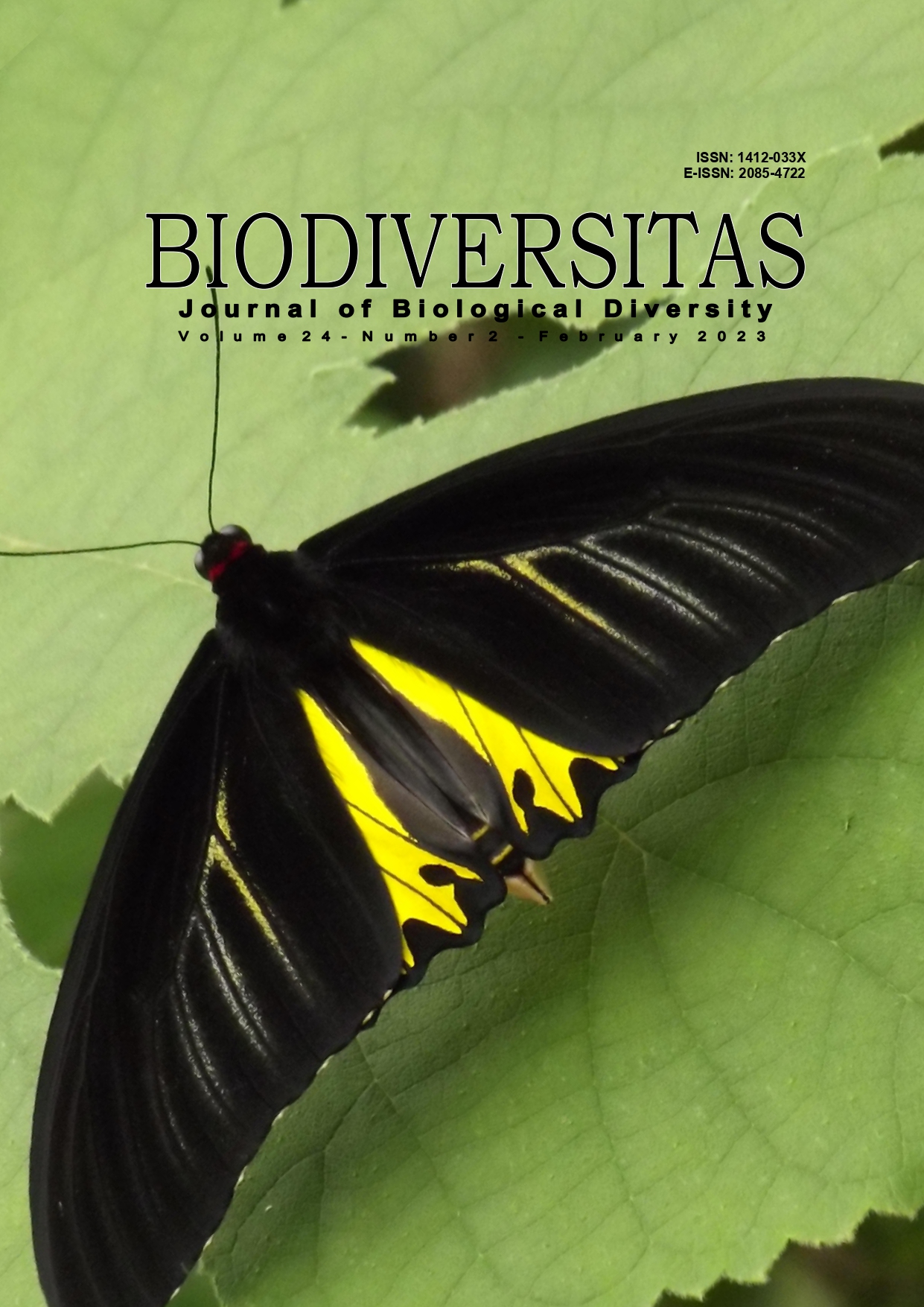Characterization and screening of urease activity of ureolytic bacteria from landfills soil in Banda Aceh, Indonesia
##plugins.themes.bootstrap3.article.main##
Abstract
Abstract. Fitri L, Aulia TB, Fauzi A, Kamil GA. 2023. Characterization and screening of urease activity of ureolytic bacteria from landfills soil in Banda Aceh, Indonesia. Biodiversitas 24: 910-915. Ureolytic bacteria are capable of producing the calcium carbonate precipitating enzyme urease. Ureolytic bacteria degrade urease into ammonia and carbon dioxide. Ureolytic bacteria can be applied in the bio-grouting technique and concrete mixtures. This study aimed to isolate and characterize ureolytic bacteria isolates, then determine the calcium carbonate precipitation potential of ureolytic bacteria isolates from landfill soil at Gampong Jawa, Banda Aceh, Indonesia. This research successfully isolated twenty-four bacterial isolates from the Gampong Jawa landfills, and ten of these isolates were confirmed to produce the urease enzyme positively. Isolates with codes BTPA-3, BTPA-6, BTPA-7, BTPA-8, BTPA-9, BTPA-15, BTPA-20, BTPA-22, BTPA-23, and BTPA-24 were able to precipitate calcium carbonate in the amounts of 1.49, 1.78, 1.71, 1.70, 1.82, 1.80, 1.32, 1.54, and 1.70 g, respectively. BTPA-3, BTPA-6, BTPA-7, BTPA-8, BTPA-9, BTPA-23, and BTPA-24 were identified as members of the genus Bacillus; BTPA-20 was as a member of the genus Staphylococcus; and BTPA-15 and BTPA-22 were members of the genus Solibacillus. This research data is new information about the potential of bacteria from the Gampong Jawa landfill, which can determine the calcium carbonate precipitation. The research also revealed that the ureolytic bacterial isolates produced could be further improved and utilized in concrete mixtures.
##plugins.themes.bootstrap3.article.details##
Most read articles by the same author(s)
- LENNI FITRI, MOHAMMAD ADZANNIE BESSANIA, NADIA SEPTI, SUHARTONO SUHARTONO , Isolation and characterization of soil actinobacteria as cellulolytic enzyme producer from Aceh Besar, Indonesia , Biodiversitas Journal of Biological Diversity: Vol. 22 No. 11 (2021)
- FAUZIAH FAUZIAH, MAULINASARI, ESSY HARNELLY, YULIA SARI ISMAIL, LENNI FITRI, Toxicity test of rose periwinkle (Catharanthus roseus) leaves endophytic bacteria using Brine Shrimp Lethality Test (BSLT) method , Biodiversitas Journal of Biological Diversity: Vol. 23 No. 1 (2022)
- SRI RAHAYU, LENNI FITRI, YULIA SARI ISMAIL, Short communication: Endophytic actinobacteria isolated from ginger (Zingiber officinale) and its potential as a pancreatic lipase inhibitor and its toxicity , Biodiversitas Journal of Biological Diversity: Vol. 20 No. 5 (2019)
- LENNI FITRI, Diversity of endophytic actinobacteria isolated from medicinal plants and their potency as pancreatic lipase inhibitor , Biodiversitas Journal of Biological Diversity: Vol. 18 No. 3 (2017)
- FADHLIAH AMFAR, LENNI FITRI, SUHARTONO, Molecular identification of a new isolate of actinobacteria ATIS61 and characterization of the protease activities , Biodiversitas Journal of Biological Diversity: Vol. 22 No. 3 (2021)
- LENNI FITRI, KARTINI AMELIA PUTRI, SUHARTONO, YULIA SARI ISMAIL, Short Communication: Isolation and characterization of thermophilic actinobacteria as proteolytic enzyme producer from Ie Seuum Hot Spring, Aceh Besar, Indonesia , Biodiversitas Journal of Biological Diversity: Vol. 20 No. 10 (2019)
- LENNI FITRI, BETTY MAULIYA BUSTAM, Screening of antimicrobial producing strains isolated from the soil of grassland rhizosphere in Pocut Meurah Intan Forest Park, Seulawah, Aceh Besar , Biodiversitas Journal of Biological Diversity: Vol. 11 No. 3 (2010)
- LENNI FITRI, YEKKI YASMIN, FAUZIAH, DWI ANDRI SEPTIANI, SUHARTONO, Characterization of BSL6 isolates isolated from honeybee hive and to determine its antibacterial activity , Biodiversitas Journal of Biological Diversity: Vol. 21 No. 10 (2020)
- YEKKI YASMIN, LENNI FITRI, FAUZIAH, FITRI WASLIYAH, Isolation of bacteria from Apis cerana hive, their antibacterial potency and cytotoxicity , Biodiversitas Journal of Biological Diversity: Vol. 20 No. 9 (2019)

